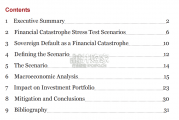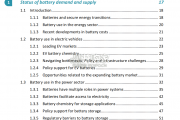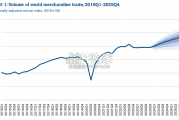The circles below display information on diferent metric across ETSs in for...
2024-05-13 9 英文报告下载
The global annual mean near-surface temperature in 2023 was 1.45 ± 0.12°C above the 1850–1900 pre-industrial average. The year 2023 was the warmest year on record according to six globally averaged datasets.1 The nine years 2015 to 2023 were the nine warmest years on record in all datasets.2 Atmospheric concentrations of the three major greenhouse gases reached new record-observed highs in 2022, the latest year for which consolidated global fgures are available, with levels of carbon dioxide (CO2 ) at 417.9 ± 0.2 parts per million (ppm), methane (CH4 ) at 1923 ± 2 parts per billion (ppb) and nitrous oxide (N2O) at 335.8 ± 0.1 ppb, respectively 150%, 264% and 124% of pre-industrial (before 1750) levels (Figure 1). Real-time data from specifc locations, including Mauna Loa3 (Hawaii, United States of America) and Kennaook/Cape Grim4 (Tasmania, Australia) indicate that levels of CO2, CH4 and N2O continued to increase in 2023. Over the past two decades, the ocean warming rate has increased; the ocean heat content in 2023 was the highest on record. Ocean warming and accelerated loss of ice mass from the ice sheets contributed to the rise of the global mean sea level by 4.77 mm per year between 2014 and 2023, reaching a new record high in 2023. Between 1960 and 2021, the ocean absorbed about 25% of annual anthropogenic CO2 emitted into the atmosphere,5 and CO2 reacts with seawater and lowers its pH. The limited number of long-term observations in the open ocean have shown a decline in pH, with a reduction of the average global surface ocean pH of 0.017–0.027 pH units per decade since the late 1980s.6 This process, known as ocean acidifcation, afects many organisms and ecosystem services7 and threatens food security by endangering fsheries and aquaculture.

标签: 英文报告下载
相关文章

The circles below display information on diferent metric across ETSs in for...
2024-05-13 9 英文报告下载

Sovereign default is a failure or refusal by a country’s government t...
2024-05-10 15 英文报告下载

Battery storage in the power sector was the fastest growing energy technolo...
2024-05-09 19 英文报告下载

China is a leading market for both goods and services exports. China...
2024-04-28 37 英文报告下载

World merchandise trade volume is expected to grow 2.6% in 2024 and 3...
2024-04-23 30 英文报告下载

Managing the intricate and diverse supply chain within the U.S. gover...
2024-04-22 37 英文报告下载
最新留言